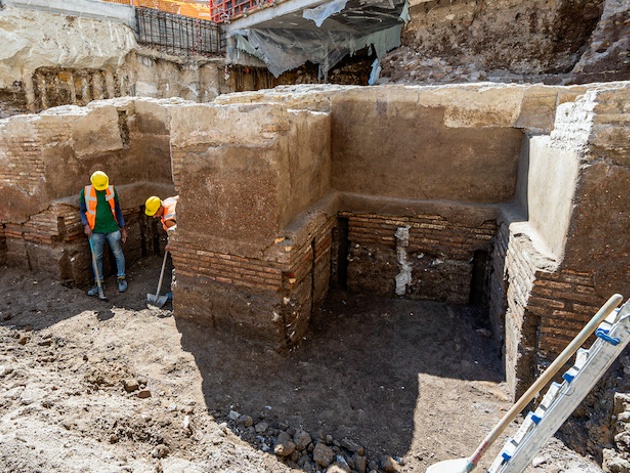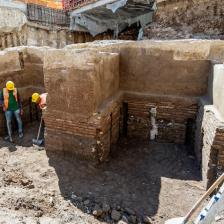
During the stratigraphic excavation - conducted by the Special Superintendence of Rome, directed by Daniela Porro, coordinated in the field by the archaeologist Dora Cirone with the scientific direction of Alessio De Cristofaro - and relocation of the fullonica (dyeing plant) found on the construction site for the Underpass Piazza Pia, the remains of a garden arrangement were found, overlooking the right bank of the Tiber. It is a structure consisting of a wall in opus quadratum of travertine, terraced on the river bank, behind which a colonnaded portico was built, of which only the foundations remain, and a large open area arranged as a garden.
The excavation made it possible to document how the arrangement was affected by three building phases, between the age of Augustus and that of Nero. The interesting discovery of a leaden fistula - lead water pipe - stamped with the name of the owner of the water supply, and therefore of the garden, allows us to identify the protagonist of the first renovation of the complex as Caligula. In fact, the inscription reads C(ai) Cæsaris Aug (usti) Germanici: it is therefore Caligula, son of Germanicus and Agrippina the elder and emperor from 37 to 41 AD. The discovery could also find confirmation in ancient literary sources.
A passage from the Embassy to Gaius (Legatio ad Gaium) written by Philo of Alexandria, a Jewish historian from Alexandria in Egypt, actually tells of how Caligula had received the legation of Alexandrian Jews right in the Gardens of Agrippina, in a vast garden overlooking on the Tiber, which separated the river from a monumental portico. The embassy had the aim of communicating to the emperor the difficulties that the Jewish community of Alexandria had experienced in relations with the Greek-Alexandrian population: a crisis that had manifested itself with violence and episodes of religious intolerance. But Caligula, a supporter of the Greek component of Alexandria, rejected the requests. The similarity between the remains found and the description of the Alexandrian historian suggest identifying the place of this meeting in the excavation of Piazza Pia.
Photo credits: Fabio Caricchia
 Condividi
Condividi












































